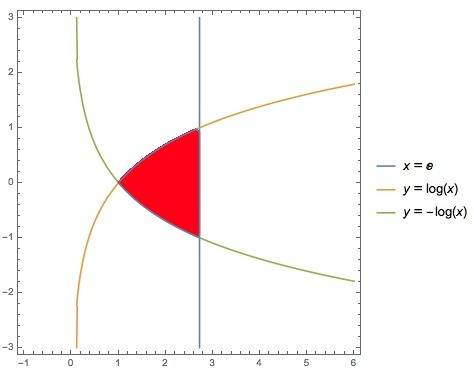
Mathematics, 31.01.2020 20:01 alvaradolm6853
Which of the following integrals represents the area of the region bounded by x = e and the functions f(x) = ln(x) and g(x) = log1/e(x)?
the integral from 0 to e of the quantity, natural log of x minus the log base 1 over e of x, dx
the integral from 1 to e of the quantity, the log base 1 over e of x minus the natural log of x, dx
the integral from negative 1 to 0 of 4 minus the log base 1 over e of x, dx plus the integral from 0 to 1 of 4 minus the natural log of x, dx
the integral from 1 to e of the quantity, natural log of x minus the log base 1 over e of x, dx

Answers: 1


Other questions on the subject: Mathematics

Mathematics, 21.06.2019 19:00, notsosmart249
The focus of parabola is (-4, -5), and its directrix is y= -1. fill in the missing terms and signs in parabolas equation in standard form
Answers: 1


Mathematics, 21.06.2019 22:00, WhirlyWave
Which function in vertex form is equivalent to f(x) = x2 + 6x + 3? f(x) = (x + 3)2 + 3 f(x) = (x + 3)2 − 6 f(x) = (x + 6)2 + 3 f(x) = (x + 6)2 − 6
Answers: 1

Mathematics, 21.06.2019 22:30, Kemosdasavage
Need same math paper but the back now i hope your able to read it cleary i need with hw
Answers: 1
You know the right answer?
Which of the following integrals represents the area of the region bounded by x = e and the function...
Questions in other subjects:

English, 06.04.2020 04:53

English, 06.04.2020 04:53




Mathematics, 06.04.2020 04:53


Social Studies, 06.04.2020 04:53

Mathematics, 06.04.2020 04:53


 and
and  intersect when
intersect when  . For all
. For all  , we have
, we have  and
and  , so
, so  . Then the area we want is given by the integral,
. Then the area we want is given by the integral,
 ,
,



